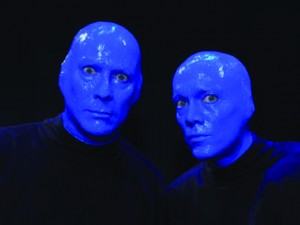 Rhode Island is a decidedly blue state with a decades-long run of nearly every major statewide office, General Assembly, congressional delegation and presidential election favoring Democrats. Save for a couple of turn-of-the-century Republican governors and the two Chafees, Democrats have held — and continue to hold — a massive power bloc in the Ocean State.
Rhode Island is a decidedly blue state with a decades-long run of nearly every major statewide office, General Assembly, congressional delegation and presidential election favoring Democrats. Save for a couple of turn-of-the-century Republican governors and the two Chafees, Democrats have held — and continue to hold — a massive power bloc in the Ocean State.
Like any large faction, however, as the pool of participants expands to include a wider range of perspectives — people with various upbringings, gender identities, races, experiences, age groups, and so forth — tension within that faction increases.
For as long as Democrats have held power in Rhode Island, there has been ongoing debate over the party’s platform, but in recent years, with a wave of younger, more globally aware and socially engaged candidates, elected officials and activists, a wedge has been drawn within party lines.
This rift is now commonly and broadly identified by media, and in some cases, party members themselves, as a split between Progressive Democrats and Conservative Democrats.
“The core issues are the same as what separates the Republican Party from the Democratic Party at the national level,” said Sam Bell, who is the former head of Rhode Island Progressive Democrats and seeking the Rhode Island Senate District 5 seat. Bell is widely considered to be one of the most prominent self-identified progressive candidates in Rhode Island this election season. “The right-wing machine Democrats are anti-choice, oppose repealing the tax cuts for the rich, oppose common-sense gun control and support brutal cuts to Medicaid. Those of us traditional Democrats who side with our national party on core policy issues are horrified to see the machine conservatives advancing the Trump agenda within our own party.”
In general, however, it is difficult to draw circles around segments of the state’s Democrats and place each elected official or candidate into one segment or the other. Take, for example, 81-year-old Patricia Fontes, who was a buzzing progressive challenger to Senator Sheldon Whitehouse before revealing on The Bartholomewtown Podcast that her Catholic background prevents her from stating she is pro-choice.
Then there’s Governor Gina Raimondo, who operates on a fiscally conservative, Wall Street-based financial infrastructure, but has provided opportunities and safety to many vulnerable people through policies that a Republican governor almost certainly would not have implemented.
Senator Sheldon Whitehouse has emerged as a national figure in the Resist Trump movement, as well as a frontline spokesperson for climate change. But he also supports massive military expenditures and development, and has been vague on the Burrillville Power Plant issue.
Even Bell, the State Senate candidate and former Progressive head, was seen marching in the inherently offensive Federal Hill Columbus Day Parade, alongside who he described as “good Democrats” Senator Whitehouse and the hawkish Democrat Senator Jack Reed.
When it comes to the state’s Democratic voters themselves, there is evidence that a wave of progressive ideals is in full motion, with many House districts swinging to candidates with progressive leanings in this year’s primary (including the rejection of Nick Mattiello-endorsed, Trump-supporting, conservative Democrat Michael Earnhart, who was defeated by incumbent, and decidedly progressive, Representative Moira Walsh).
“When we have it, polling consistently shows that the voters are with us on our core issues: repealing the tax cuts for the rich, common sense gun safety reform, protecting a woman’s right to choose, opposing cuts to Medicaid, etc. Voters overwhelmingly support us on the issues,” Bell told me.
The recent Democratic primary between incumbent Lieutenant Governor Daniel McKee and challenger Representative Aaron Regunberg was billed as a “Battle for The Heart and Soul of The Democratic Party,” pitting the decidedly progressive Regunberg against the established, more mainstream-leaning McKee. In the end, voters re-elected McKee by an incredibly narrow margin — 51% to Regunberg’s 49% — serving as an illustration of the scope of different perspectives that Democratic voters posses.
Just a few years back, Senator Bernie Sanders defeated Secretary Hillary Clinton by a whopping 54.7% to 43% in the Rhode Island Democratic presidential primary, suggesting that Rhode Island Democrats largely identify with progressive elements of their party.
Another major point to keep in mind: When Rhode Island’s House of Representatives reconvenes in January, if he survives his general election challenge from Steven Frias, will House Democrats reinstall Nick Mattiello as speaker of the house, or install a new speaker with more of an open mind to the progressive wing of the caucus?
Amidst this vocal expansion of ideas, progressive organizations are sure of one thing: Any Democrat, progressive or conservative, is better than a Republican. The Rhode Island chapter of the National Education Association just recently endorsed Governor Raimondo, despite a longstanding feud over the governor’s handling of teachers’ pensions, signalling that when it comes to actual policy, Democrats are willing to bite the bullet on intra-party ideology and support the most electable candidate who most closely aligns with their needs.
More Posts by The Author:
Total Speculation: An entirely hypothetical and unverified look at 2022 RI lieutenant gubernatorial potentials
Cupid’s Arrow: Left and right should join forces in disruption
State of the State: How will RI reach Raimondo’s renewable energy goal?
Mall Brawl: It isn’t really a jungle out there
‘Tis the Season: Prominent RIers share what the season means to them


